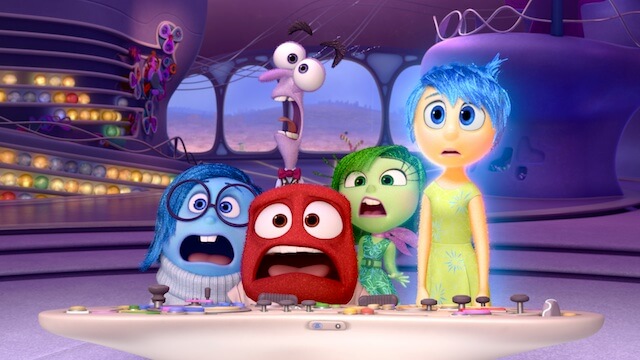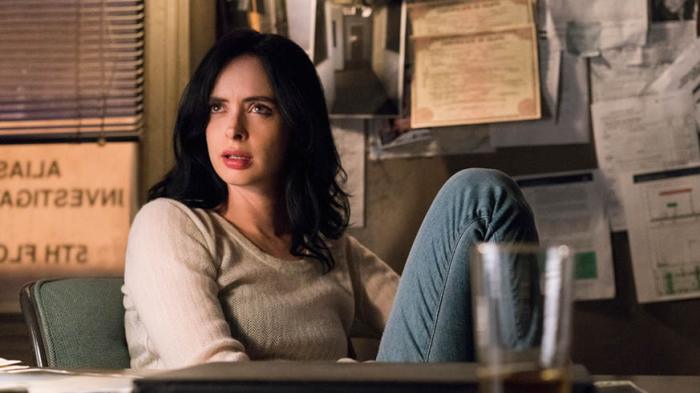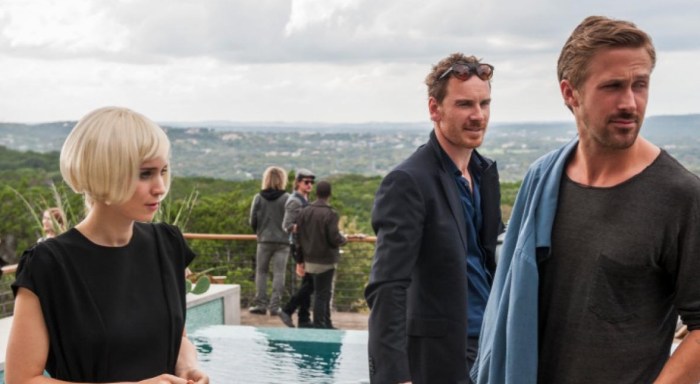‘Inside Out’ At their best, no one is better than Pixar — except the maybe now defunct Studio Ghibli, but it’s close — at bridging the gap between children and adults. They make films that work on one level for kids, and another for the people that brought them to the movies. So “Inside Out,” their 15th feature, is an odd duck: it’s an animated film that is more or less exclusively for adults. It’s a look at the death of childhood so devastating it’s not clear what very, very young viewers — that is, ones younger than its main child character, age 11 — will get out of it, if anything. There’s pretty colors and fuzzy characters often doing wacky things. There’s a funny imaginary friend who’s part talking elephant, part dolphin. But even he gets bottomlessly sad. The story, though, is all for the adults. It forces its older audience to relive, with a new, clever, funny yet brutally honest perspective, what it was like to enter adolescence, lose our sense of unbridled wonder and become, in essence, emotionally complex — that is, screwed up, neurotic, self-defeating, insecure wrecks whose capacity for joy is, to put it mildly, finite. It’s one of the “Toy Story” films redux — another go at reminding us of what we lost as we aged and reminding us of all that we can never get back. And, of course, it does this all in the form of a candy-colored, wondrous, shape-shifting comedy. The protagonist isn’t young whippersnapper Riley (voice of Kaitlyn Dias). It’s Joy (Amy Poehler), one of five emotional figures living inside her, “Herman’s Head”-style. Joy mans the controls along with Anger (Lewis Black, natch), Fear (Bill Hader), Disgust (Mindy Kaling) and Sadness (Phyllis Smith). Once the Alpha of the group, Joy has of late seen her position diminish. After a move from ever-wintry Minnesota to broccoli pizza-loving San Francisco, it’s diminished more still, and after a freak accident sends both Joy and Sadness stranded in a remote portion of Riley’s psyche — somewhere around the endless aisles of deep memories and the oblivion where memories go to die — it starts to appear Joy, and therefore joy, may never return. The breakdown of the human mind over spaces could stand to be even more streamlined than it is, but once some cumbersome explanations are out of the way “Inside Out” is a whiz to follow. It drags Joy and Sadness through such eyesores as Imagination Land and the Subconscious — not as good as the one in “Being John Malkovich,” but close. Best of all is Abstract Thought, yielding the most delirious animated sequence of its kind since the Louvre visit in Joe Dante’s underrated “Looney Tunes: Back in Action.” There are a lot of jokes and clever ideas, but the flipside of every gag and flight of fancy is overwhelming sadness. When Joy and Sadness befriend a former Imaginary Friend (Richard Kind), still bumming around long after being mostly forgotten, his every move comes with the knowledge that he, like all things, must pass. As much as “Inside Out” is a conduit for parents — or, hey, the totally childless adults who too see animation, sometimes by themselves in theaters teeming with howling youngsters — to experience an abstract version of their own lost innocence, there is something here for the kids. Like most toons, “Inside Out” has a homily, only it’s not a comforting one, though it is one that is genuinely sage. It’s also a bummer, but so is the film — a beautiful bummer. Pixar director Pete Docter previously made “Up,” and “Inside Out” plays like that film’s opening true love montage stretched, with no shortage of awe-inspiring sadism, to feature length.
Director: Pete Docter
Voices of: Amy Poehler, Phyllis Smith
Rating: PG
4 (out of 5) Globes
‘Inside Out’ is a Pixar movie for adults, less so for kids

Pixar, Disney
Follow Matt Prigge on Twitter @mattprigge






















